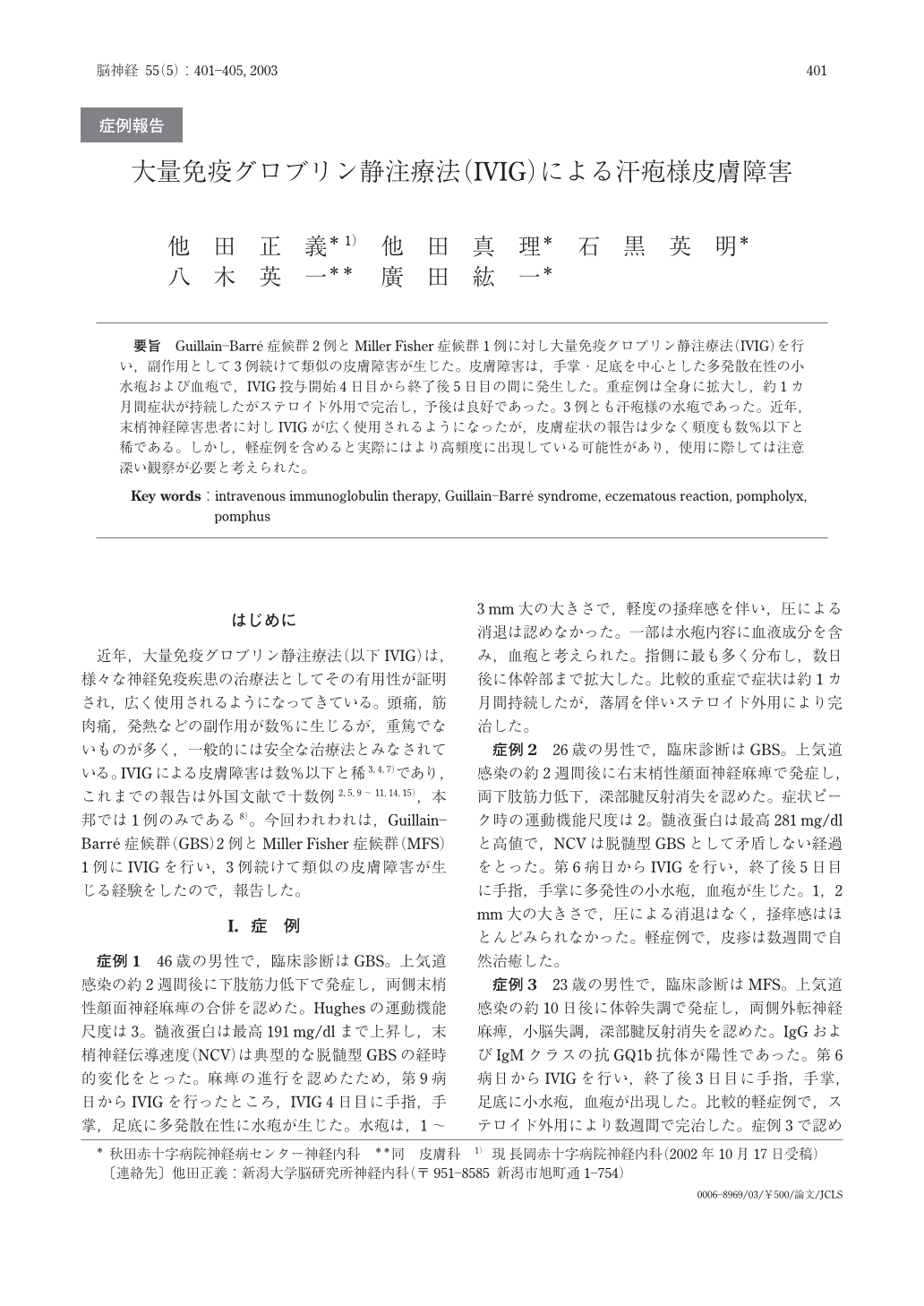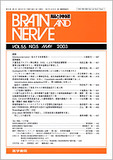Japanese
English
- 有料閲覧
- Abstract 文献概要
- 1ページ目 Look Inside
要旨 Guillain-Barré症候群2例とMiller Fisher症候群1例に対し大量免疫グロブリン静注療法(IVIG)を行い,副作用として3例続けて類似の皮膚障害が生じた。皮膚障害は,手掌・足底を中心とした多発散在性の小水疱および血疱で,IVIG投与開始4日目から終了後5日目の間に発生した。重症例は全身に拡大し,約1カ月間症状が持続したがステロイド外用で完治し,予後は良好であった。3例とも汗疱様の水疱であった。近年,末梢神経障害患者に対しIVIGが広く使用されるようになったが,皮膚症状の報告は少なく頻度も数%以下と稀である。しかし,軽症例を含めると実際にはより高頻度に出現している可能性があり,使用に際しては注意深い観察が必要と考えられた。
The use of intravenous immunoglobulin(IVIG)has become an accepted treatment for patients with Guillain-Barré syndrome. Few patients develop adverse reactions to IVIG such as flushing, urticaria, eczema, chest tightness, wheezing, diaphoresis and hypotension. We report three patients who each recieved a five day course of IVIG at the standard dose of 0.4g/kg/day. Two patients had Guillain-Barré syndrome, and the other had Miller Fisher syndrome. All developed eczematous reactions after 4 days from the start day of therapy to 5 days from the last day of therapy. One patient with GBS had widespread eczematous eruption with severe pompholyx lesions on the palms, fingers and soles, and spread over a period of 2 to 3 weeks to become generalized. That persisted for 4 weeks but gradually settled with desquamation by the use of topical steroids. None of our patients subsequently developed long-term or chronic eczema after the resolution of the initial cutaneous reaction. Eczematous reactions of our patients were similar to those reported in the literature and clinically typical as pompholyx. Although pompholyx has been recognized as a clinical entity, its cause remains obscure. Cutaneous reactions after IVIG infusion are recognized to be rare, but actually they may occur more frequently than our recognition, and its knowledge is essential to make the right clinical decision.

Copyright © 2003, Igaku-Shoin Ltd. All rights reserved.


